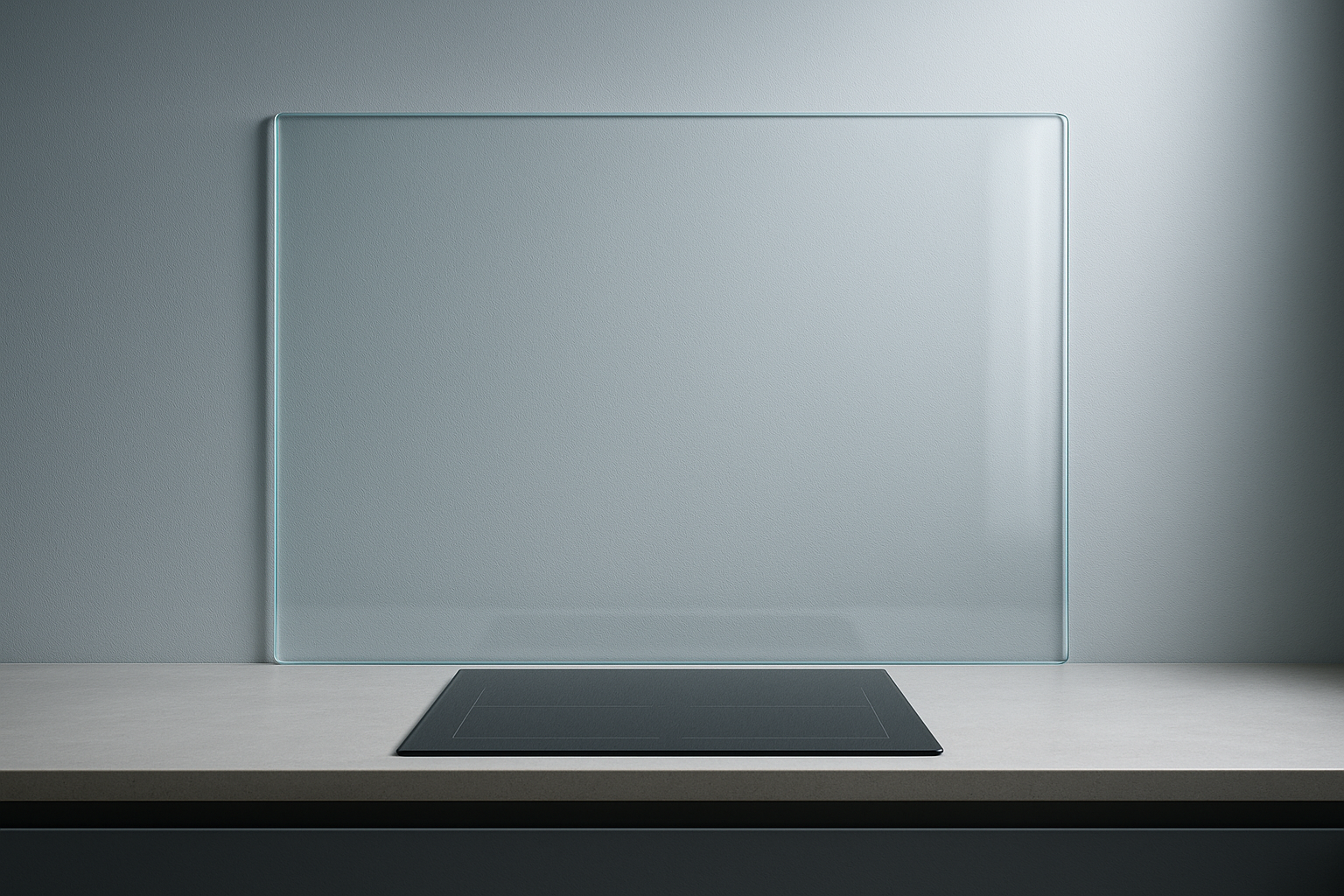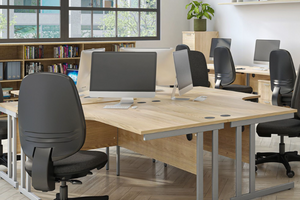How Glass Enhancements Transform Compact Homes
Share
Copy Link

Living in a smaller home often presents unique challenges, especially when trying to create a sense of openness and light. Clever use of glass features can significantly enhance the perception of space. Embracing glass in your home design can make even the tightest spaces feel more expansive.
Maximising space in a compact home requires thoughtful planning and strategic design choices. As urban living spaces become increasingly smaller, finding innovative ways to create an airy and light-filled environment is essential. Glass features such as partitions, doors, and glass splashbacks play a crucial role in reflecting and enhancing natural light. By incorporating these elements, you can transform your home into a brighter and more welcoming space, effectively making the most of every square foot.
Utilising glass partitions for light
Glass partitions offer a modern solution for creating open yet defined spaces within smaller homes. Unlike solid walls, these transparent dividers allow light to flow freely, reducing the need for artificial lighting during the day. They help maintain a visual connection between different areas of the home while providing privacy when needed. This is particularly useful in open-plan living areas where you want to delineate specific zones without sacrificing natural light.
The versatility of glass partitions makes them suitable for various applications, from home offices to living room dividers. They can be customised with frosted or textured finishes to add a touch of elegance while still permitting daylight to pass through. This adaptability ensures that you can enjoy both style and function in your home design. Moreover, glass partitions contribute to a sleek, minimalist aesthetic that complements contemporary interiors.
In addition to enhancing light distribution, glass partitions can also create an illusion of depth and continuity in smaller homes. By removing visual barriers, they make spaces appear larger than they are. This effect is particularly beneficial in narrow or oddly-shaped rooms where traditional walls might feel restrictive. By strategically placing glass partitions, you can maximise natural light exposure and create a more spacious environment.
When selecting glass partitions, consider incorporating innovative features like switchable smart glass technology. This advanced solution allows you to transform transparent panels into opaque surfaces at the touch of a button, offering unprecedented flexibility in managing privacy and light flow. Such adaptable systems prove particularly valuable during different times of day or when hosting guests, enabling you to modify your space's atmosphere instantly while maintaining the benefits of natural light distribution.
Enhancing natural light with glass doors
Glass doors are another effective way to increase natural light penetration in compact homes. Whether used as patio doors or interior room separators, they provide an unobstructed view of outdoor spaces or adjacent rooms. This transparency allows sunlight to filter through, creating a seamless transition between indoors and out. The result is a brighter, more inviting atmosphere that makes small spaces feel larger.
Incorporating sliding or bi-fold glass doors can further enhance this effect by allowing entire walls to open up when weather permits. This design choice not only floods your home with daylight but also encourages airflow and connectivity with the outdoors. The added benefit of easy access to gardens or balconies enhances your living experience by blurring the lines between interior and exterior environments.
The use of glass doors isn't limited to exterior applications; they can also be employed within the home to separate different functional areas while maintaining an open feel. For example, using glass pocket doors in bathrooms or kitchens provides privacy without sacrificing light flow. These features ensure that even enclosed rooms benefit from natural illumination, contributing to an overall sense of spaciousness throughout the house.
Modern glass door technologies now include energy-efficient options with specialised coatings that help regulate indoor temperature while maximising natural light transmission. These advanced glazing solutions can reduce UV radiation and heat gain during summer months while retaining warmth during winter, making them an environmentally conscious choice for homeowners seeking to balance natural lighting with energy efficiency. The investment in such technology often pays dividends through reduced utility costs and enhanced comfort levels throughout the year.
Creating a spacious feel with glass splashbacks
Glass splashbacks are an excellent addition to kitchens looking for both style and functionality. Their reflective surfaces not only add a modern touch but also bounce light around the room, making it appear larger and more vibrant. Positioned strategically behind countertops or stoves, these splashbacks highlight areas often shadowed by cabinetry or appliances.
The ability to customise glass splashbacks with various colours or patterns allows homeowners to express personal style while maintaining a bright atmosphere. Their smooth surfaces are easy to clean and maintain, offering practicality alongside their aesthetic appeal. This combination of beauty and utility makes them an ideal choice for those seeking to enhance their kitchen's visual impact without compromising on functionality.
Beyond kitchens, consider utilising glass splashbacks in other areas such as bathrooms or laundry rooms where moisture resistance is essential. These installations provide similar benefits by reflecting light into typically darker spaces, thus enhancing overall brightness. The result is a unified design language that emphasises openness throughout the home while delivering practical advantages like easy maintenance and durability.
For those seeking to maximise the reflective properties of glass splashbacks, consider incorporating LED strip lighting behind or beneath the panels. This creative lighting solution can transform your space during evening hours, creating an ambient glow that enhances the perception of depth while providing practical task lighting. The combination of natural light reflection during the day and strategic artificial lighting at night ensures your glass splashbacks remain a striking feature around the clock.
Tips for coordinating glass features
Achieving harmony when integrating various glass elements requires careful planning and coordination. Begin by selecting complementary styles and finishes that align with your home's existing decor scheme. Consistency in design ensures that each feature contributes positively to the overall aesthetic rather than clashing with other elements.
A key consideration is balancing transparency with privacy needs; choose frosted or tinted options where appropriate without sacrificing too much daylight ingress. For instance, pairing clear glass doors with frosted partitions creates distinct zones while preserving openness across shared areas like living rooms or dining spaces.
Pay attention also towards scale—opt for larger panes wherever possible since they minimise visible seams which could disrupt continuity visually speaking—especially important when working within tight confines typical within smaller homes themselves! Coordinated use amongst different types such as sliding panels alongside pivot-style hinges helps achieve seamless transitions between indoor-outdoor environments alike too whilst still retaining cohesive look overall together simultaneously throughout entire property instead either/or option alone separately again likewise indeed!
Consider the acoustic properties of different glass installations when planning your space. Modern acoustic glass solutions can help manage sound transmission between rooms while maintaining visual connectivity. This becomes particularly important in open-plan layouts where noise control might be a concern. By carefully selecting glass features with appropriate acoustic ratings, you can create zones that offer both visual openness and acoustic comfort, perfect for maintaining peace in busy households.
Caring for glass features involves regular cleaning using non-abrasive solutions designed specifically for this material type. Ensure streak-free results by cleaning efficiently and effectively each time. It's important to handle glass with care to avoid damage, and consider safety features such as tempered glass to prevent injury in case of breakage. By maintaining your glass installations properly, you can preserve their aesthetic appeal and functionality for years to come.
Published: August 1, 2025



